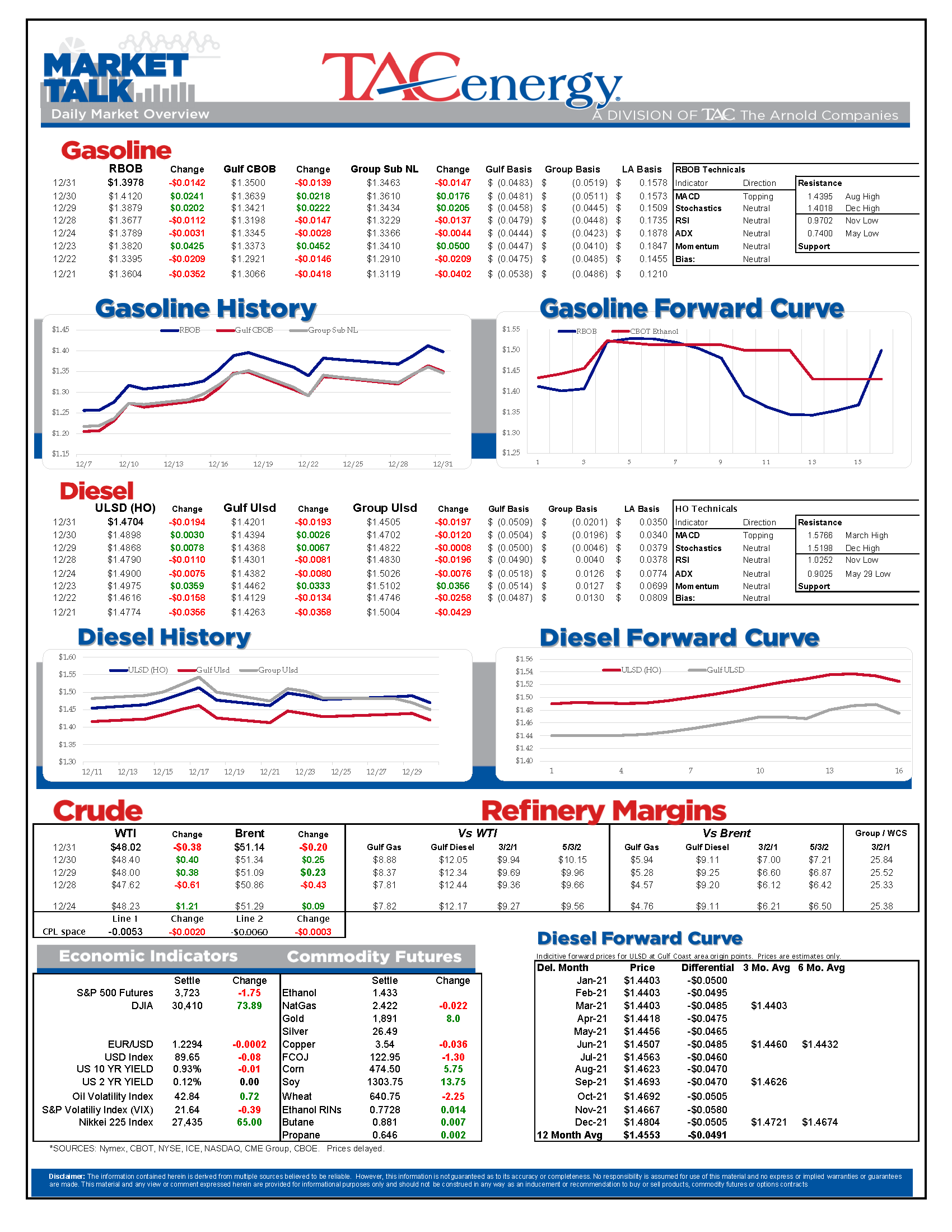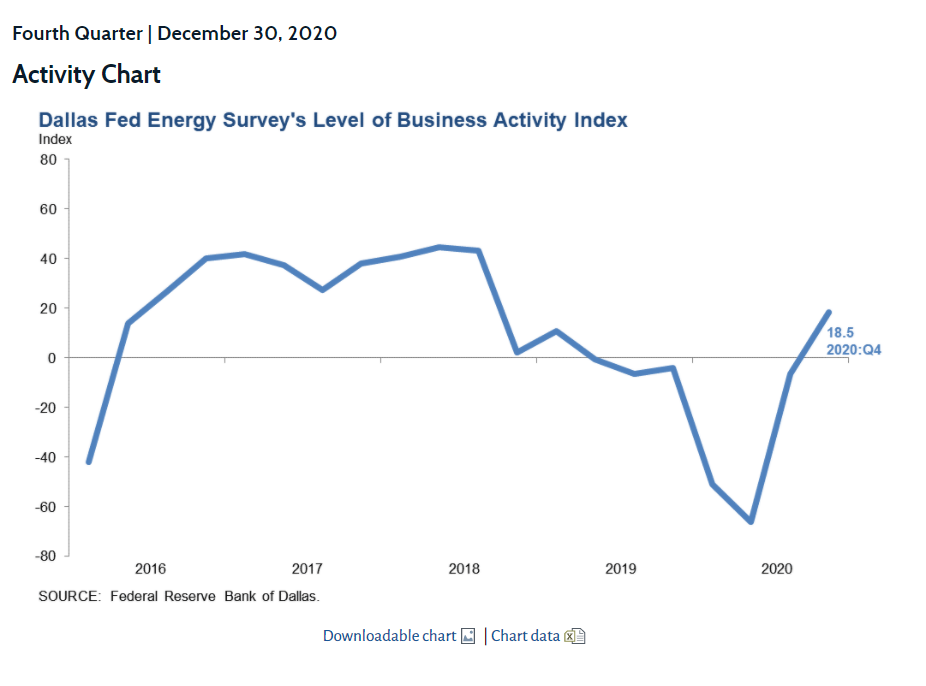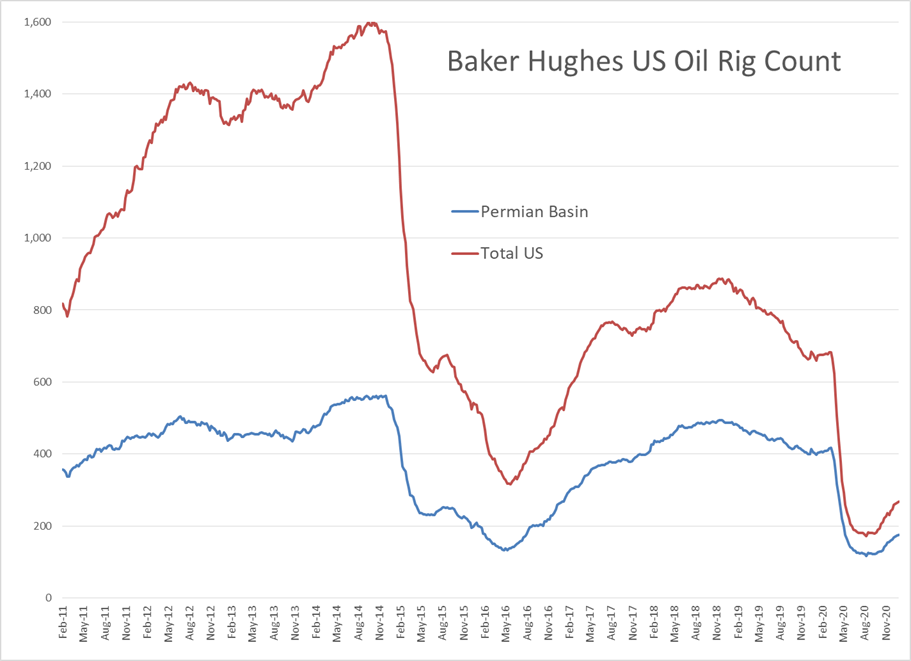Energy And Equity Markets Limp To Finish Line

Energy and equity markets are limping to the finish line with minor losses in the early going to end this long strange year. The table below highlights the dramatic swings, and very different outcomes for some of the most watched commodity, equity and currency contracts.
Today is expiration day for the January (21) ULSD and RBOB contracts so watch the February contracts for price direction today, and note that most rack prices published tonight should carry through the long weekend since markets are closed tomorrow.
It’s been a brutal year for many, and the energy industry has certainly taken its lumps. Record setting amounts of debt were subject to bankruptcy filings in the oil patch, but things have arguably been worse for refiners as crack spreads have only made minor improvements compared to the recovery in oil prices, and the industry saw the most permanent closures announced in more than 30 years as a result.
The pace and scale of demand recovery will be the big underlying story for 2021, as the world races to distribute vaccines and get people back to a more normal existence, while a new and more potent strain of COVID threatens to derail that progress. There will be plenty of theories about how the new administration in Washington will change the landscape for several industries – ours being one of the most noteworthy – but unless the Senate is flipped in the January runoff, it seems like major legal changes are unlikely in the near term.
The Crescendo of emission reduction plans is likely to continue to build in 2021 as more big oil and refining companies lay out plans to reduce their pollution levels during the long slow transition away from fossil fuels. The Dallas Fed issued a special report this week taking a look at what the industry is doing to battle climate change, and highlighting pipeline capacity as one of the keys to reducing emissions near term. Renewable diesel is becoming the poster child for a way forward for motor fuels to have a legitimate renewable option near term as ethanol and biodiesel have already pushed the limits of their usefulness. The EIA is ending the year by highlighting the progress made on the renewable front as US consumption of those products surpassed coal in 2019 for the first time in 130 years.
3 more drilling rigs were put to work last week, marking the 12th increase in 14 weeks. According to the Baker Hughes report, we started the year with 877 rigs drilling for oil on land in the US, which ended up being the highest count of the year. That number hit a record low in August at 172, before starting a slow and steady recovery over the past 3 months as prices got back to more survivable levels and operators faced hard decisions on whether to drill or risk giving up leases in some cases.
Click here to download a PDF of today's TACenergy Market Talk.
Latest Posts
Week 16 - US DOE Inventory Recap
Energy Markets Trading Quietly In The Red As Ethanol Prices Rally To Five-Month High
The Struggle For Renewable Producers Continues As A Rapid Influx Of Supply And Crashing Credit Prices Make Biodiesel
After Years Of Backwardation, Diesel Prices Have Slipped Into Contango Over The Past Week
Social Media
News & Views
View All
Week 16 - US DOE Inventory Recap

Energy Markets Trading Quietly In The Red As Ethanol Prices Rally To Five-Month High
Energy markets are trading quietly in the red to start Wednesday’s session after a healthy bounce Tuesday afternoon suggested the Israel-Iran-linked liquidation had finally run its course.
There are reports of more Ukrainian strikes on Russian energy assets overnight, but the sources are sketchy so far, and the market doesn’t seem to be reacting as if this is legitimate news.
Ethanol prices have rallied to a 5-month high this week as corn and other grain prices have rallied after the latest crop progress update highlighted risks to farmers this year, lower grain export expectations from Ukraine, and the approval of E15 blends this summer despite the fact it pollutes more. The rally in grain and renewables prices has also helped RIN values find a bid after it looked like they were about to test their 4-year lows last week.
The API reported small changes in refined product inventories last week, with gasoline stocks down about 600,000, while distillates were up 724,000. Crude oil inventories increased by 3.2 million barrels according to the industry-group estimates. The DOE’s weekly report is due out at its normal time this morning.
Total reported another upset at its Port Arthur refinery that’s been a frequent flier on the TCEQ alerts since the January deep freeze knocked it offline and damaged multiple operating units. This latest upset seems minor as the un-named unit impacted was returned to normal operations in under an hour. Gulf Coast basis markets have shrugged off most reports of refinery upsets this year as the region remains well supplied, and it’s unlikely we’ll see any impact from this news.
California conversely reacted in a big way to reports of an upset at Chevron’s El Segundo refinery outside of LA, with CARBOB basis values jumping by more than a dime. Energy News Today continued to show its value by reporting the upset before the flaring notice was even reported to area regulators, proving once again it’s ahead of the curve on refinery-related events. Another industry news outlet meanwhile struggled just to remember where the country’s largest diesel seller is located.
Click here to download a PDF of today's TACenergy Market Talk

The Struggle For Renewable Producers Continues As A Rapid Influx Of Supply And Crashing Credit Prices Make Biodiesel
The sigh of relief selloff continues in energy markets Tuesday morning, with gasoline prices now down more than 20 cents in 7 sessions, while diesel prices have dropped 26 cents in the past 12. Crude oil prices are within a few pennies of reaching a 1 month low as a lack of headlines from the world’s hot spots allows some reflection into the state of the world’s spare capacity for both oil and refined products.
Gasoline prices are trading near a 6-week low this morning, but still need to fall about another nickel in order to break the weekly trendline that pushed prices steadily higher since December. If that trend breaks, it will be safer to say that we saw the end of the spring gasoline rally on April 12th for the 2nd year in a row. Last year RBOB futures peaked on April 12 at $2.8943 and bottomed out on May 4th at $2.2500. The high (at this point) for this year was set on April 12th at $2.8516, and the low overnight was $2.6454.
It’s not just energy commodities that are seeing an unwind of the “flight to safety” trade: Gold prices had their biggest selloff in 2 years Monday and continue to point lower today. Just how much money poured into commodities in the weeks leading up to the direct confrontation between Israel and Iran is unclear, but we have seen in year’s past that these unwind-events can create a snowball effect as traders can be forced to sell to cover their margin calls.
Supply > Demand: The EIA this morning highlighted the record setting demand for natural gas in the US last year, which was not nearly enough to offset the glut of supply that forced prices to a record low in February. A shortage of natural gas in Europe was a key driver of the chaotic markets that smashed just about every record in 2022, and an excess of natural gas supply in Europe and the US this year is acting as a buffer, particularly on diesel prices.
The struggle for renewable producers continues as a rapid influx of supply and crashing credit prices make Biodiesel, RD and SAF unprofitable for many. In addition to the plant closures announced in the past 6 months, Vertex Energy reported Monday it’s operating its Renewable Diesel facility in Mobile AL at just 50% of capacity in Q1. The truly scary part for many is that the $1/gallon Blender's tax credit ends this year and is being replaced by the “Clean” Fuel production credit that forces producers to prove their emissions reductions in order to qualify for an increased subsidy. It’s impossible to say at this point how much the net reduction will be for domestic producers, but importers will get nothing, and at current CI values, many biodiesel producers may see their “blend credit” cut by more than half.
Click here to download a PDF of today's TACenergy Market Talk.





